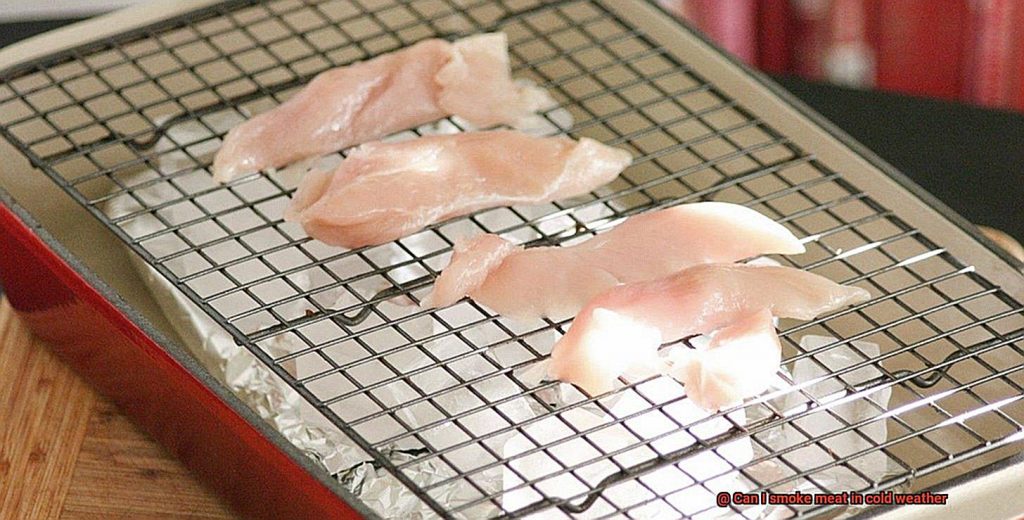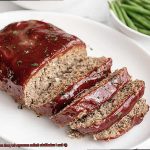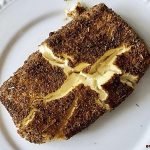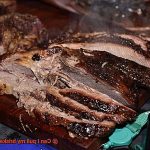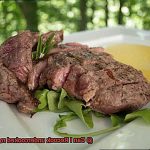Do you crave the mouthwatering taste of smoked meat, but dread the idea of standing outside in frigid temperatures? Fear not, aspiring pitmasters. You can still smoke meat in cold weather. But before you start heating up your smoker, there are a few things to keep in mind.
Firstly, be aware that colder temperatures will affect your cooking time. The lower the temperature, the longer it will take for your meat to reach its ideal internal temperature. So, make sure to adjust your cooking time and temperature accordingly.
Secondly, pay close attention to your fuel source. Charcoal may burn out faster in cold weather and create inconsistent heat. This could negatively impact the flavor and texture of your meat.
Lastly, don’t forget about protecting both your smoker and meat from harsh elements like wind, rain, and snow. These factors can all have a significant impact on the quality of your smoked meat.
But with proper preparation and knowledge, you can still achieve delicious results even in chilly weather. So grab a warm coat and let’s get smoking.
Contents
What Temperature is Considered Cold Weather?
The first consideration is what temperature is considered “cold” weather. While there is no exact temperature, temperatures below 40 degrees Fahrenheit are generally considered cold.
Maintaining a consistent temperature in your smoker is crucial to the quality of your smoked meats. At colder temperatures, it can be challenging to maintain a consistent temperature inside your smoker, which can affect the flavor and texture of your smoked meats. Therefore, you may need to use more fuel and adjust your cooking times and temperatures to ensure that your meat is properly cooked.
It’s also essential to be aware of the potential safety hazards when smoking meat in colder temperatures. If the temperature drops below freezing, ice can form on your smoker and cause it to become unstable or even tip over. Additionally, if you’re using charcoal or wood as your heat source, you’ll need to take extra precautions to prevent fire hazards.
Electric smokers are generally better suited for colder temperatures than charcoal or wood smokers. However, if you have a propane or gas smoker, you need to be careful about carbon monoxide buildup, which can be more of a risk in colder temperatures when the smoker needs to run for longer periods of time.
To smoke meat in cold weather safely and effectively, you should consider the following tips:
- Use an insulated smoker or wrap it with blankets to maintain a consistent temperature.
- Preheat your smoker before adding your meat to bring the internal temperature up to the desired level.
- Use more fuel than you typically would to maintain a consistent temperature.
- Keep an eye on the weather forecast and only smoke meat during days when the temperature is above freezing.
- Check for ice buildup on your smoker regularly and remove any ice that forms.
What Types of Smokers are Best Suited for Cold Weather?
When it comes to smoking meat in cold weather, there are a few factors you need to consider. The type of smoker you choose can make a big difference in the outcome of your smoked meats. Below are five sub-sections detailing the best types of smokers for cold weather smoking.
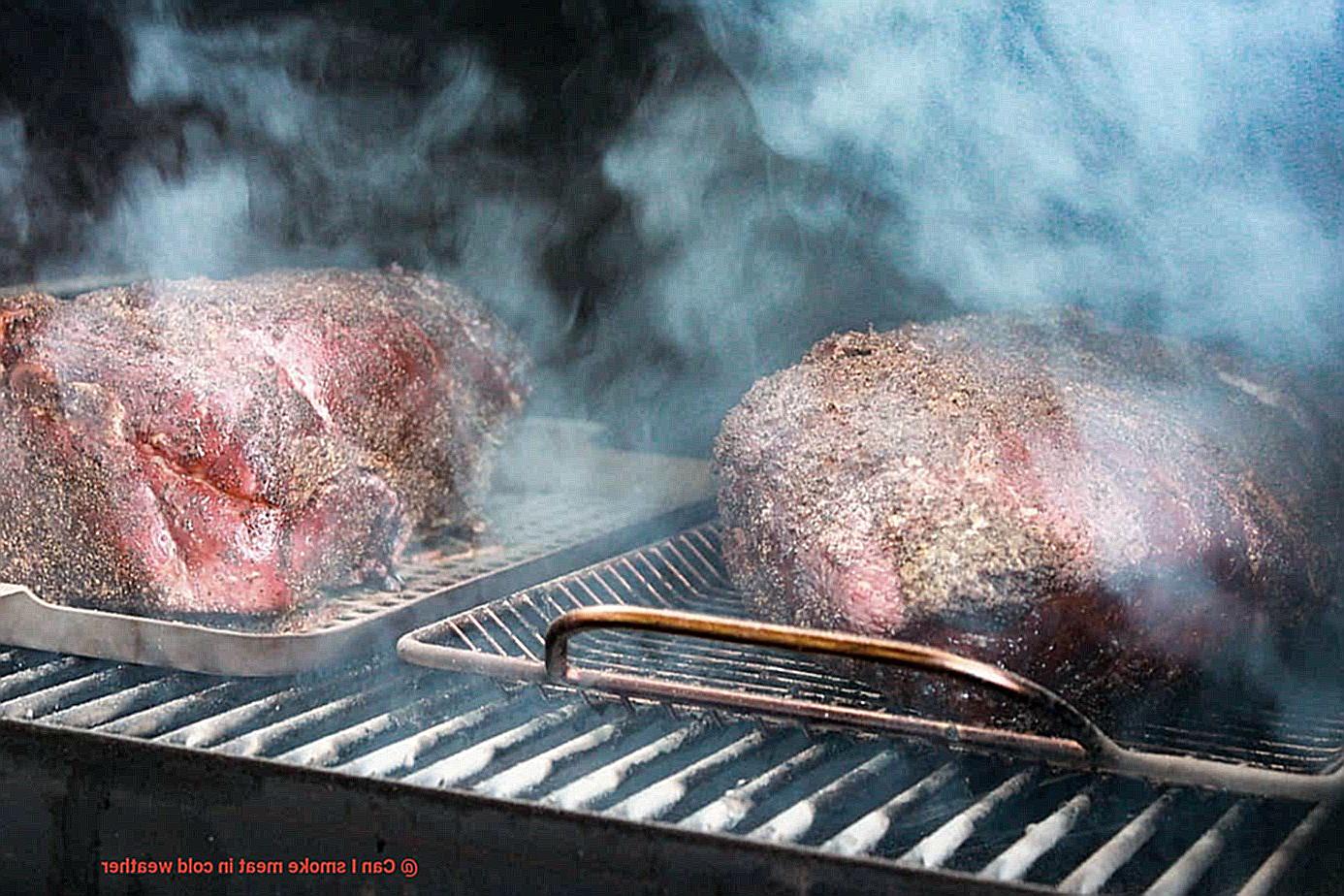
Insulated Smokers
If you’re looking for a smoker that can handle cold weather, an insulated smoker is a great choice. These smokers are designed with thick walls and insulation to help retain heat and keep temperatures consistent, even in colder environments. They also often come with features like double doors or locking mechanisms to prevent heat loss when you open the smoker to add wood or check on your meat. Insulated smokers are perfect for those who prioritize consistent temperatures throughout the smoking process.
Pellet Smokers
Pellet smokers use compressed wood pellets as fuel and are a great option for cold weather smoking. They can maintain a consistent temperature throughout the smoking process, thanks to their digital controls that allow you to set and monitor the temperature. Even if the temperature drops due to colder weather, you can easily adjust it with the digital controls. Pellet smokers also have the benefit of producing a delicious smoky flavor that rivals charcoal smokers.
Electric Smokers
Electric smokers use electricity to generate heat and smoke, making them easier to control and maintain in colder temperatures. They often come with insulated walls and digital temperature controls that help maintain consistent temperatures throughout the smoking process. Electric smokers are a great option if you want an easy-to-use smoker that can handle cold weather. However, they may not provide the same level of smoky flavor as charcoal smokers.
Charcoal Smokers
Charcoal smokers are known for producing an authentic smoky flavor, but they require constant attention to maintain temperature and airflow. This can be challenging in cold weather since the smoker may not hold temperature as well as it would in warmer weather. However, some charcoal smokers come with insulation or can be modified with insulation to help retain heat in colder temperatures. If you’re willing to put in the extra effort to maintain temperature, a charcoal smoker can produce amazing smoked meats in cold weather.
Factors to Consider
When choosing a smoker for cold weather smoking, it’s important to consider factors such as ease of use, smoky flavor, and insulation capabilities. Insulated smokers, pellet smokers, and electric smokers are all great options that can help maintain consistent temperatures throughout the smoking process. Charcoal smokers can also work, but they require more attention to maintain temperature in colder temperatures.
Adjustments to Make When Smoking Meat in Cold Weather
Then, you must know that smoking meat in cold weather can pose some challenges to achieving the perfect tenderness and flavor. Don’t worry; I’m here to share some expert tips on the necessary adjustments you need to make when smoking meat in cold weather.
Firstly, maintaining a consistent temperature is vital when smoking meat. Cold weather can cause temperature fluctuations that can affect the cooking process. To combat this, use a smoker that is well-insulated and has a good seal. This will help maintain a consistent temperature inside the smoker. You can also use a water pan to regulate the temperature and add moisture to your cooking environment.
Secondly, the cooking time needs to be adjusted when smoking meat in cold weather. Since the smoker may not maintain the desired temperature, it may take longer for the meat to reach its desired internal temperature. Thus, using a meat thermometer is crucial to ensure that your meat is fully cooked and safe to eat.
Thirdly, using a windbreak or shelter can protect your smoker from cold winds and prevent heat loss. This can be as simple as setting up a temporary barrier around your smoker using tarps or other materials. By reducing heat loss, your smoker will maintain a consistent temperature, leading to perfectly smoked meat.
Lastly, choosing the right type of wood is essential when smoking meat in cold weather. Hardwoods such as oak, hickory, and maple are ideal for smoking meat in colder temperatures because they burn hotter and longer than softer woods like fruitwoods. The right wood will ensure that your meat is infused with a delicious smoky flavor.
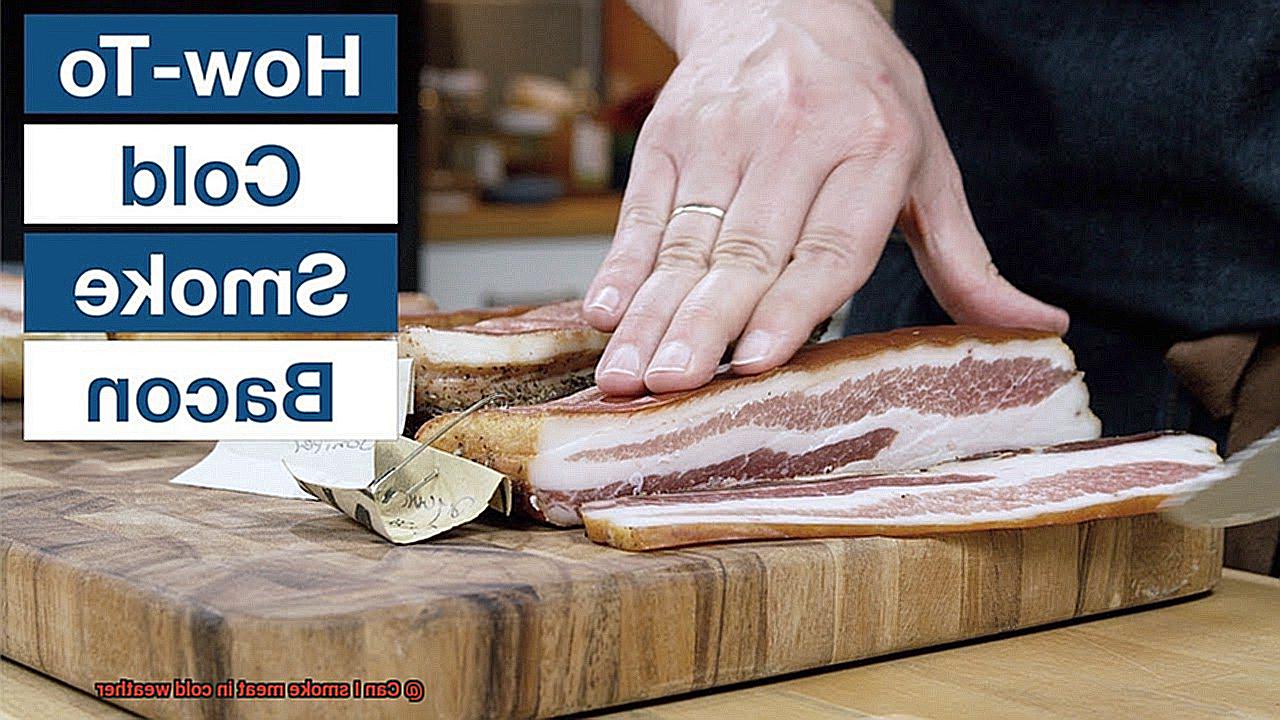
Potential Safety Concerns When Smoking Meat in Cold Weather
Before you can get your smoker going, it’s essential to be aware of the potential safety concerns that come with smoking meat in cold weather. Fortunately, as an expert in this field, I have done extensive research and compiled some vital information to help you smoke your meat safely and without any worries.
One of the primary concerns when smoking meat in cold weather is the temperature of the meat. The external temperature can make it difficult for the heat to penetrate the meat properly, leading to longer cooking times. This increased cooking time can increase the risk of bacterial growth, which can cause foodborne illness. To avoid this, it is crucial to use a reliable meat thermometer and monitor the temperature throughout the smoking process until the internal temperature reaches a safe level.
Another safety concern when smoking meat in cold weather is related to the smoker itself. If your smoker isn’t designed for use in cold temperatures, it may not function properly and could pose a fire hazard. Additionally, if your smoker is located in an area where there is a risk of carbon monoxide buildup, it can pose a serious health risk. So, make sure to use a smoker that’s designed for use in cold weather and located in a well-ventilated area.
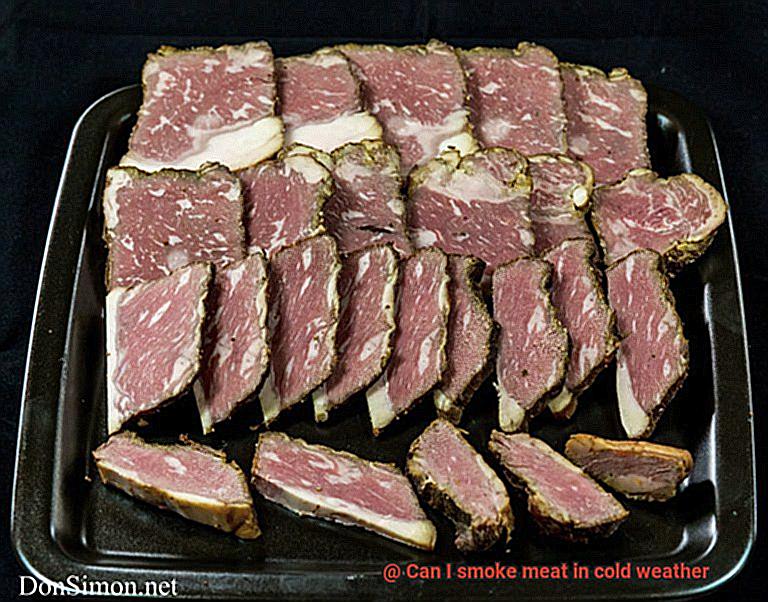
Lastly, let’s talk about the type of wood you’re using for smoking. When using wood chips or pellets in cold weather, they may not burn as efficiently as they would in warmer temperatures. This inefficiency can result in an increase in smoke and potentially harmful chemicals being released into the air. Therefore, it’s critical to use wood chips or pellets that are specifically designed for use in cold weather.
Tips and Tricks for Smoking Meat in Cold Weather
Smoking meat is a popular cooking technique that requires low and slow heat for several hours. Although it’s often associated with sunny summertime cookouts and backyard barbecues, smoking meat in cold weather is possible with some tips and tricks.
Maintain a Consistent Temperature
One of the most important things to keep in mind when smoking meat in cold weather is to maintain a consistent temperature. It’s essential to use a smoker that has good insulation or to add some extra insulation to your existing smoker. This will help keep the temperature inside the smoker steady, which can be challenging in colder weather. Additionally, using a wireless thermometer to monitor the temperature inside the smoker will allow you to keep track of the temperature without having to open the lid frequently.
Use an External Heat Source
During colder weather, using an external heat source such as a propane burner or an electric heating element can help maintain the temperature inside the smoker. This will provide an additional source of heat that can compensate for the colder ambient temperatures outside.
Choose the Right Wood
Choosing the right wood to smoke your meat with is also crucial in cold weather. Hardwoods like oak, hickory, and mesquite are great options as they burn slowly and produce a lot of smoke. The smoke will help keep the internal temperature of the smoker up while infusing your meat with that signature smoky flavor.
Protect Your Smoker from Wind
In windy conditions, it’s essential to protect your smoker from gusts of wind that can quickly drop the temperature inside. You can use materials like plywood or even hay bales to create a barrier around your smoker. This will protect your smoker from the elements and ensure that your meat is cooked evenly.
Be Patient
Last but not least, patience is key when smoking meat in cold weather conditions. The process may take longer than usual due to lower temperatures, but rushing the process by increasing heat levels can result in tough, dry meat. Instead, aim for low and slow cooking, allowing plenty of time for the smoke to infuse into the meat and create tender, flavorful results.
The Benefits of Smoking Meat in Cold Weather
As an expert in this field, I can attest to the numerous benefits that come with this cooking technique.
One of the most significant advantages of smoking meat in cold weather is the unique and complex flavor it creates. The colder temperatures slow down the cooking process, allowing the smoke to penetrate deeper into the meat. This results in a distinct taste that cannot be achieved during other times of the year. Whether you’re smoking brisket, ribs, or pork shoulder, your taste buds will be in for a treat.
But the benefits don’t stop there. Smoking meat in cold weather also extends the shelf life of your meat. The colder temperatures inhibit bacterial growth, which means you can enjoy your smoked creations for longer without worrying about spoilage.
Another unexpected benefit of smoking meat in cold weather is how it can keep you warm and cozy. Tending to your smoker requires a lot of attention and care, which means you’ll be spending plenty of time outside. But fear not. Your smoker’s warmth will keep you comfortable while you get some fresh air and exercise. Not to mention, there is something magical about seeing the smoke billowing out of your smoker on a crisp winter day.
And let’s not forget about the potential cost savings. Meat prices tend to be lower during winter due to decreased demand, which means you can stock up on your favorite cuts and smoke them for later use. This is a great way to save money on groceries without sacrificing flavor or quality.
Common Mistakes to Avoid When Smoking Meat in Cold Weather
There are a few common mistakes that people make when smoking meat in chilly temperatures that can impact the quality of the finished product. But don’t worry, I’m here to help you avoid these mistakes and ensure that your smoked meat turns out perfectly every time.
One of the most significant mistakes people make is not accounting for the weather conditions and making adjustments to the smoking process accordingly. When it’s cold outside, it’s essential to maintain a consistent temperature inside the smoker. Adjusting the smoker can be as simple as adding more wood chips or adjusting the vents, but doing so will ensure that your meat is cooked evenly and thoroughly.
Another mistake is not giving your meat enough time to smoke properly. When it’s colder outside, the smoking process can take longer than usual. So, be patient and let your meat smoke thoroughly – it’ll be worth the wait when you take that first delicious bite.
Opening the smoker too often during the smoking process is also a common mistake. Cold air rushes in when you open the smoker, which can significantly affect cooking time and quality. So, resist the urge to check on your meat too often and let it do its thing.
Lastly, using the wrong type of wood chips can also be detrimental when smoking meat in cold weather. Soft woods may not burn hot or long enough in chilly temperatures, leading to uneven cooking and potentially ruining your meat. Instead, opt for hardwoods like hickory or oak – they burn hotter and longer and are perfect for smoking meat in cold weather.
To summarize, here are some tips to keep in mind when smoking meat in cold weather:
- Account for weather conditions and adjust your smoking process accordingly
- Give your meat enough time to smoke properly
- Avoid opening the smoker too often
- Use hardwoods like hickory or oak for the best results.
tBGYm4-7h0o” >
Conclusion
To sum up, smoking meat in cold weather is a fantastic way to add a unique and delicious flavor to your favorite cuts. However, it’s essential to follow some tips and tricks to ensure that your smoked meat turns out perfectly every time.
One of the most important things to keep in mind when smoking meat in cold weather is the impact of colder temperatures on cooking times. Adjusting cooking times accordingly can help you avoid undercooked or overcooked meats.
Another crucial factor is choosing the right type of smoker for cold weather smoking. Insulated smokers, pellet smokers, electric smokers, and charcoal smokers all have their benefits depending on factors such as ease of use, smoky flavor, and insulation capabilities.
Maintaining a consistent temperature inside the smoker is also vital for safe and effective smoking. Using an external heat source like propane or electric heating element can help you maintain the temperature inside the smoker. And selecting the right wood chips or pellets will give you that signature smoky flavor you’re after.
Finally, avoid common mistakes like not accounting for weather conditions or opening the smoker too often during the smoking process. By following these tips and tricks for smoking meat in cold weather, you can enjoy mouthwatering smoked meats all year round while staying warm and cozy.
In short, with a little bit of preparation and attention to detail, smoking meat in cold weather can be a delicious and rewarding experience.

